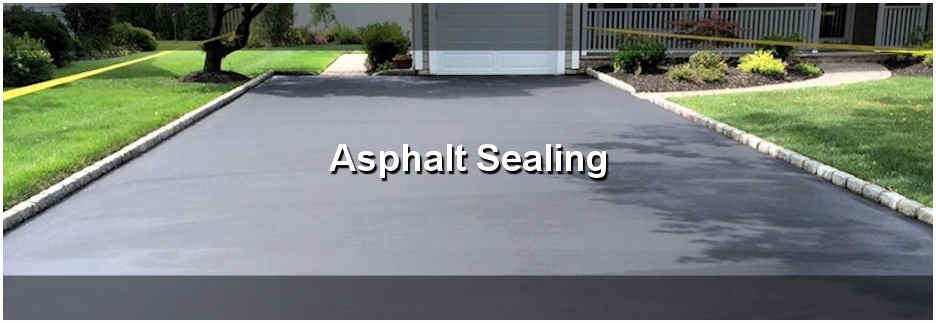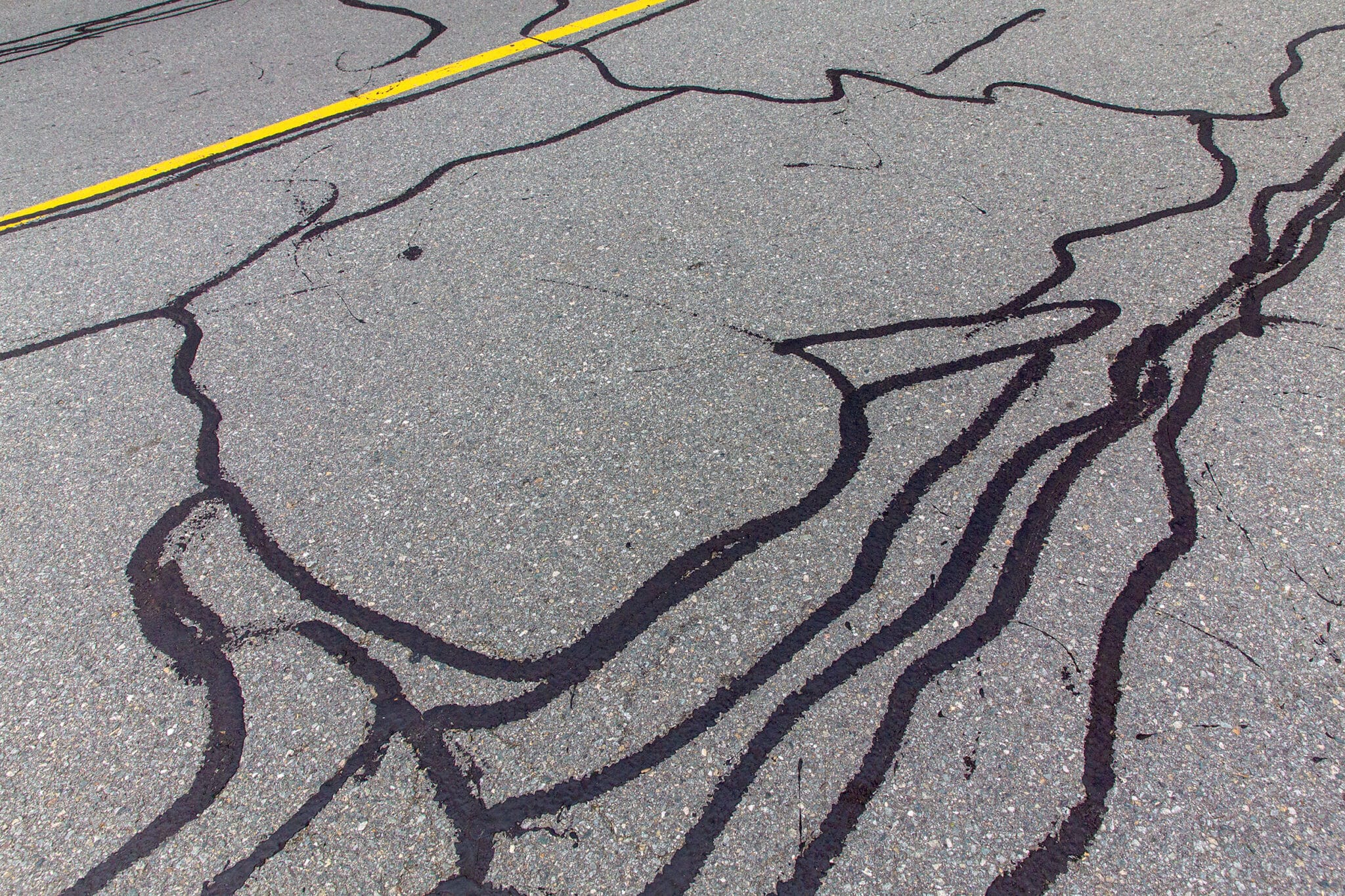Elevate Commercial Charm: Warm Mix Asphalt Sealing for Angled Parking Lots
Elevate Commercial Charm: Warm Mix Asphalt Sealing for Angled Parking Lots
Blog Article
Hot Mix Asphalt: A Lasting Solution for Pavement
Hot Mix Asphalt (HMA) has arised as a leading lasting option for sidewalk remedies, providing a myriad of cutting-edge technologies and environmental advantages. As the demand for eco-friendly construction methods grows, discovering the nuances of HMA's sustainability can give valuable insights into the future of pavement remedies.
Environmental Benefits of Hot Mix Asphalt

Furthermore, Warm Mix Asphalt helps to mitigate city warm island results. Its dark color soaks up sunlight, lowering the amount of heat reflected back right into the atmosphere contrasted to lighter-colored pavements. This can reduce ambient temperatures in metropolitan locations, decreasing the need for air conditioning and eventually lowering energy usage.
In addition, Hot Mix Asphalt adds to boosted stormwater administration. Its permeable nature allows water to infiltrate the pavement and charge groundwater materials, minimizing drainage and the threat of flooding. These ecological advantages make Warm Mix Asphalt a lasting selection for paving roads and freeways.
Energy Performance in HMA Manufacturing
Is energy effectiveness a critical consider the production of Hot Mix Asphalt (HMA)? Absolutely. Power plays a substantial duty in the manufacturing of HMA, influencing both price and environmental sustainability. One essential element of energy efficiency in HMA production is using warm mix asphalt (WMA) innovations (regrading). WMA permits the mixing and placement of asphalt at reduced temperature levels contrasted to typical warm mix asphalt, leading to minimized energy intake throughout production. This process not just decreases fuel usage yet additionally reduces greenhouse gas discharges, making it an extra environmentally pleasant alternative.
Moreover, developments in plant modern technologies have actually led to even more energy-efficient HMA production procedures. Modern plants are made with features like recycled asphalt sidewalk (RAP) processing capacities, effective heater systems, and enhanced insulation, all contributing to energy cost savings. By optimizing power usage in HMA manufacturing, the market can reduce its carbon footprint while keeping top notch sidewalk products. Energy effectiveness is, therefore, a vital consideration in guaranteeing the sustainability of Hot Mix Asphalt production.
Recyclability of Warm Mix Asphalt
The recyclability of Warm Mix Asphalt (HMA) is a critical element of its sustainability and lasting ecological effect. HMA is just one of one of the most recycled materials in the United States, with over 100 million lots of redeemed asphalt pavement (RAP) being reused every year in brand-new sidewalk construction. Reusing HMA offers a number of ecological advantages, such as lowering the demand for virgin products, decreasing energy consumption during production, and decreasing the quantity of waste sent out to garbage dumps.
The procedure of recycling HMA involves crushing the existing sidewalk, crushing it into More Bonuses smaller sized items, and blending it with new aggregate and asphalt binder to develop a recycled mix. Generally, the recyclability of HMA plays a considerable role in promoting lasting methods within the pavement sector.

Long-Term Efficiency of HMA
Asphalt sidewalks show sturdiness and strength over an extensive duration, mirroring the long-term efficiency of Warm Mix Asphalt (HMA) The longevity of HMA can be attributed to its ability to endure heavy web traffic loads, rough climate condition, and the effects of aging. Studies have actually revealed that well-designed and correctly constructed HMA pavements can last for 20 years or even more with normal upkeep. The trick to maximizing the long-term efficiency of HMA exists in utilizing top notch products, complying this with finest practices in construction, and implementing reliable upkeep approaches. Appropriate drain, routine examinations, and prompt repair services are vital for maintaining the structural integrity of HMA pavements with time. Furthermore, improvements in HMA innovation, such as making use of polymer-modified binders and cozy mix asphalt, have further boosted the durability and long life of HMA pavements. By focusing on high quality construction and upkeep methods, HMA continues to confirm itself as a sustainable and cost-efficient solution for long-lasting sidewalk infrastructure.

HMA: Sturdiness and Sustainability
Demonstrating both sturdiness and sustainability, Hot Mix Asphalt (HMA) has actually become a keystone in the building of resilient sidewalk infrastructures - commercial parking lot paving. HMA's toughness stems from its capacity to hold up against hefty loads, extreme weather problems, and high traffic volumes, making it a trustworthy option for roadways, highways, and airport terminal runways. The structure of HMA, which generally consists of aggregates, binder, and filler, plays a critical role in boosting its longevity and resistance to tear and put on
Moreover, HMA's sustainability exists in its recyclability and energy-efficient production process. The capacity to recycle reclaimed asphalt pavement (RAP) in new HMA mixes lowers the need for virgin materials and lessens the ecological effect of sidewalk construction and maintenance. Additionally, the power effectiveness of generating HMA hinges on its lower mixing temperature levels contrasted to various other sidewalk materials, bring about minimized energy usage and greenhouse gas emissions.
Conclusion
Finally, warm mix asphalt (HMA) provides a sustainable option for sidewalk with its eco-friendly attributes. HMA's check my source recyclability, power performance in production, and long-lasting sturdiness make it an environmentally friendly selection for road building. By preserving all-natural sources, reducing waste, and reducing greenhouse gas exhausts, HMA plays a critical function in promoting sustainability in infrastructure growth. Its capacity to alleviate urban heat island effects further emphasizes its value in creating eco mindful and resistant sidewalk systems.
HMA is one of the most recycled materials in the United States, with over 100 million tons of redeemed asphalt pavement (RAP) being recycled each year in new sidewalk building.The process of recycling HMA includes crushing the existing pavement, squashing it right into smaller pieces, and blending it with brand-new aggregate and asphalt binder to create a recycled mix.Asphalt pavements demonstrate durability and strength over an extensive duration, mirroring the long-term performance of Hot Mix Asphalt (HMA) Additionally, advancements in HMA technology, such as the usage of polymer-modified binders and cozy mix asphalt, have additionally improved the durability and durability of HMA pavements. The capacity to recycle redeemed asphalt pavement (RAP) in brand-new HMA mixes reduces the demand for virgin products and reduces the ecological influence of pavement building and construction and maintenance.
Report this page